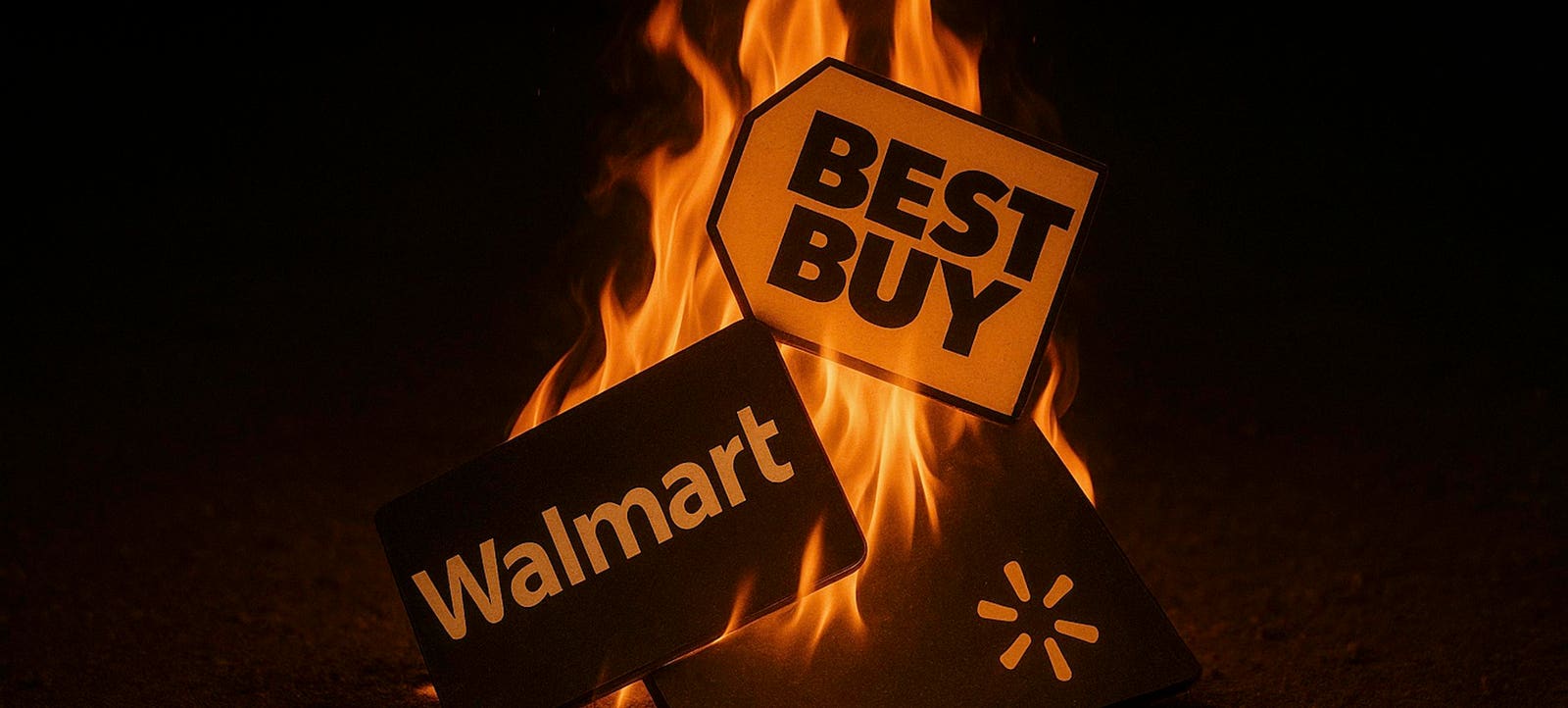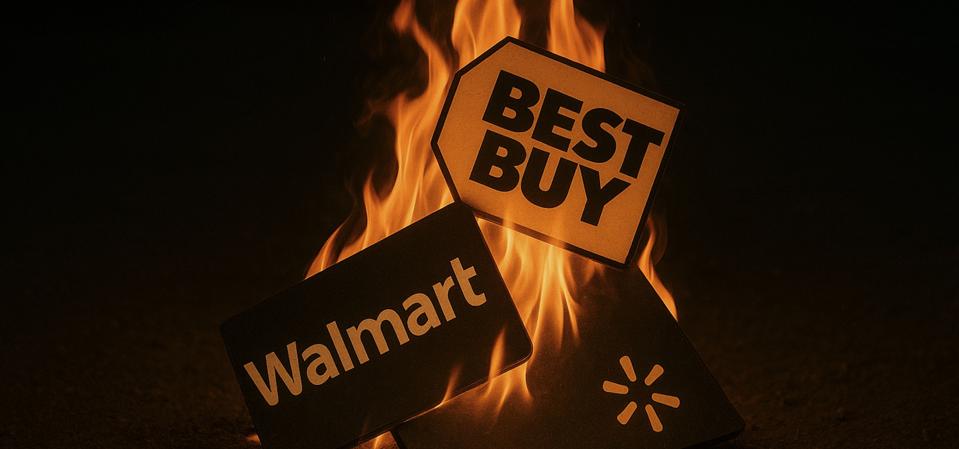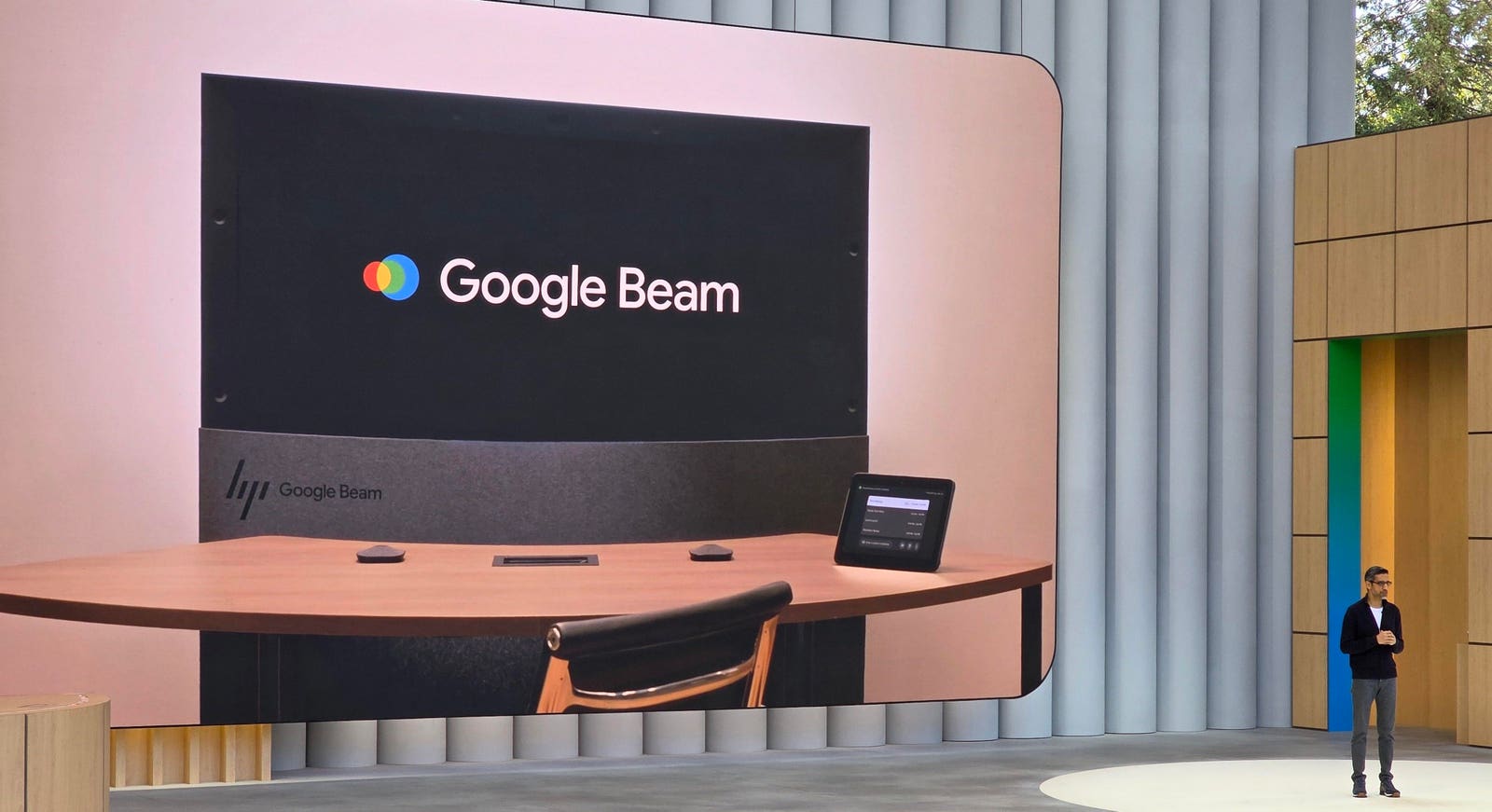Amazon’s homepage might be dying soon. Walmart online might become obsolete. Retail is being … More
The days of big online retail as we know it are over. Amazon, Walmart, Best Buy, and many others will all need to reinvent themselves as e-commerce changes. Once again, the homepage is dead. What will this mean for the big brands? What are the opportunities for small players?
Retail Unbundling
OpenAI, Gemini, Perplexity, and Grok are not just changing how people search — they’re redefining how people shop. Gone are the days when your homepage served as the front door to your retail universe. Today, answers and product links come more and more directly from AI-powered assistants powered by LLMs (Large Language Models). In my research I show that the traffic from LLMs is 9x as valuable as traditional search traffic. As soon as these LLMs will know your credit card information, they will shop for you. The future is all about agentic e-commerce.
For the traditional retailer, this means the customer’s path to your product no longer runs through your digital storefront. Take DayDream, a startup that just launched a personal shopping agent. When AI becomes the curator, the advisor, and the shopping guide—what happens to the digital mall? Yes, they are going to die. I see three dominant strategies to survive the unbundling of e-commerce.
Daydream launched the personal AI fashion agent.
What Retail Can Learn from Media’s Unbundling
Like so often during times of change, we can learn from the past. When was the last time that technology unbundle a market? Yes, news media in the world of the social internet. What happened a decade ago?
When HTML and social media transformed the media industry, the homepage lost its power. Readers no longer started their journey on whatevernews.com. Instead, they landed on a single article—discovered via Facebook, Twitter, or Google. The article became the atomic unit of value. The media brands receded. Many scaled down, and only top outlets like The New York Times or The Economist managed to build up a new business.
The winners — beyond the platforms that drove this unbundling — were the creators, the journalists. While the front pages of news websites died, platforms like Substack and Medium thrived, offering journalists and creators a direct-to-consumer surface. A surface that was found by the Googles and Facebooks of this world.
Retail is now entering the same cycle of disruption and again we will see the homepage die, the creator / producer win and the aggregators thrive.
The End Of Amazon, BestBuy, Walmart As We Know Them
Amazon, BestBuy, Walmart — these giants have long served as the “homepages” of shopping. Customers typed in the URL, searched for a product, and navigated their ecosystem. But as AI becomes the new interface, that direct entry point is weakening much as the media homepage died.
Why would a shopper visit bestbuy when they can simply ask an AI: “What’s the best washing machine for a small apartment with eco features?” The LLM won’t show the homepage — it will show the best answer, wherever that answer lives.
This shift renders the traditional e-commerce retailer vulnerable. Amazon, BestBuy, Walmart and their peers risk becoming invisible unless they evolve.
The Three Strategies For E-Commerce Retailer
Just like once media companies had to reinvent their business and focus — online retail has a few potential strategies:
Price Leadership – The Walmart Model
Price will always be a factor. LLMs will query retailers — likely via agent protocols such as MCP (Model Context Protocol) — about the price. If the best price wins, then companies like Walmart with substantial purchasing power will come out ahead. Being the cheapest is a strategy. It leads to razor-thin margins, but it works for a few players at massive scale.
Distribution Network Leadership – The Amazon Edge
Shops will still need to deliver. Speed and reliability matter. Amazon, while its homepage might fade, will win through logistics dominance, speed, and convenience. They’ve built the most efficient delivery machine on Earth.
Content And Advisory Leadership
This third strategy is just emerging. Much as in media we saw content drove clicks, we will see content wins as well in retail. Retailers will win if they deliver expert advice.
Don’t think Best Buy — think Tom’s Guide, which offers trusted technology advice. Don’t think Walmart — think REI, the leader in outdoor equipment. Offer real advice, curated selections, and personalized shopping experiences. This is where AI opens doors.
In my work, I see many retailers that want to become part of the LLM conversation. I wrote about Answer Engine Optimization (AEO) and what brands need to know in this Forbes article. The key idea: LLMs will get trained on authentic and novel content. This is also sometimes called Generative Engine Optimization (GEO) or LLMO (LLM-Optimization). Brands with unique and novel takes on authentic questions will be remembered by the LLM.
This is the future for new brands. Just as the media industry saw the rise of specialized bloggers like Ben Thompson — who sells niche knowledge — we’ll see retail brands focusing on knowledge that general LLMs don’t yet have. Best advice for vitamins beyond the usual? Deep expertise in hardware installation? Leading voices in fashion? That’s where the opportunity lies.
If big brands want to seize this opportunity, they’ll need to become multi-brand platforms. Launching specialized micro-brands, each built around a customer niche and powered by AI-driven personalization.
The Future Will Be More Targeted And More Personalized
Picture the new world of e-commerce.
- A landing page that adjusts to your taste in home decor.
- Product recommendations generated dynamically based on lifestyle, not clicks.
- Influencer-curated collections surfaced through LLMs.
- Site-search that offers a chat-gpt style experience.
This is retail, reimagined not for a homepage, but for a world where every page is a landing page.
Expert Knowledge – The Winner Of Retail Unbundling
Just as the media landscape now thrives with niche creators, so too will e-commerce. Big changes lie ahead. Two and a half years ago — when the LLM hype had just started — I predicted in my podcast that the future would be “indie.” That’s exactly what we’re now seeing with retail brands.
The winners will be those who embrace specialization, personalization, and advisory power. Not everyone needs to be Amazon, Walmart or Best Buy. But everyone needs a plan for the age of AI discovery.









